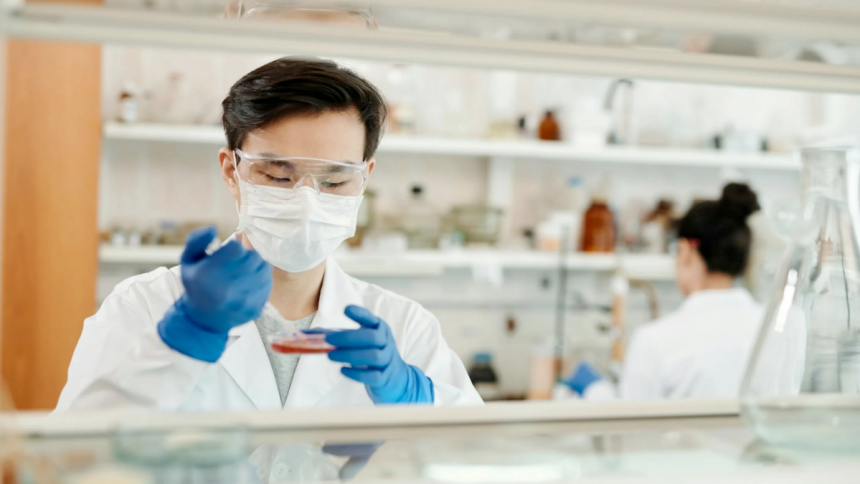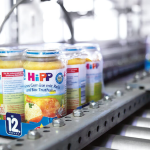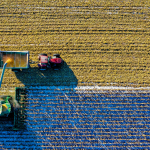In modern cell biology, cell maintenance is a key factor in the success of any research. Accuracy and precision in cell culture maintenance determine the reliability of the results obtained and the efficiency of scientific experiments. Among the many tools and techniques used in cell culture work, cell lifter and cell viability assessment methods occupy a special place.
These tools and techniques not only allow researchers to manipulate cells efficiently and monitor their condition throughout the experiment. The success of cell culturing and cell survival depends on properly using these techniques. Let’s take a closer look at how these tools and techniques help scientists.
Introduction to Cell Culture Techniques
Modern methods are essential in biological research that enable their growth and study outside their natural environment. These techniques provide valuable insights into cellular behavior, drug development, and disease modeling. Maintaining high-quality cell cultures requires precise handling and proper equipment. They also demand effective separation methods. Key aspects of cell culture techniques include :
- Aseptic Techniques: Preventing contamination is crucial. Researchers use sterile environments such as biosafety cabinets and follow strict protocols to maintain culture integrity.
- Cell Growth Conditions: Temperature, humidity, and CO₂ levels must be carefully controlled. They must mimic physiological conditions and promote optimal cell growth.
- Seeding and Expansion: Proper cell density and passage number influence experimental accuracy. Overcrowding can lead to nutrient depletion and reduced viability.
- Viability Assessment: Trypan Blue exclusion and MTT assays help evaluate cultured cells’ health. They ensure research reliability.
- Cell Detachment Methods: Adherent cells require detachment for subculturing and analysis. Enzymatic treatments like trypsin are common. A cell lifter provides a gentle, non-enzymatic alternative. It helps preserve cell viability.
- Culture Media Selection: Different cell types need specific nutrients. They also must have growth factors and pH balance. It makes media selection a critical component of cell culture techniques.
- Long-Term Storage: Cryopreservation using liquid nitrogen enables long-term storage of cell lines. It maintains their characteristics for future studies.
- Quality Control: Regular monitoring of morphology, growth rates, and contamination ensures reproducibility. It also guarantees reliability in experimental outcomes.
Using a lifter improves cell handling precision. It maintains high viability, making it an essential tool for researchers working with adherent cell lines.
Cell Lifter and Its Function in Cell Harvesting Methods
The cell lifter is crucial in harvesting methods, particularly for adherent cultures. It gently detaches cells from culture surfaces without enzymes. This tool preserves cell integrity and viability. This method is essential for researchers. It allows them to maintain healthy cells for downstream applications. They are analysis, subculturing, and experimentation.
The lifter has key functions in cell harvesting methods, including:
- Non-Enzymatic Cell Detachment: A lifter removes them mechanically. It is unlike trypsin or other enzymatic treatments. This lifter reduces potential damage caused by prolonged enzyme exposure.
- Preserving Viability: A cell lifter ensures high viability. They minimize stress and damage to cell membranes. It makes them ideal for sensitive cell lines.
- Suitable for Many Types: It is effective for harvesting epithelial, fibroblast, and other adherent cells. They require careful handling.
- Prevents Enzyme-Related Variability: A cell lifter eliminates inconsistencies. It is the enzyme concentration, incubation time, or neutralization steps.
- Facilitates Downstream Applications: Harvested cells remain intact and functional for various applications. They include flow cytometry, microscopy, and molecular assays.
- Reduces Chemical Exposure: This is ideal for researchers who prefer mechanical detachment. It helps them minimize using additional reagents in cell harvesting methods.
- Enhances Experimental Reproducibility: A standardized mechanical detachment method contributes to consistent results across multiple experiments.
In harvesting methods, the lifter is vital in maintaining experimental accuracy. It also improves overall cell culture efficiency.
Cell Viability and Its Impact on Research
Cell viability is a critical factor in biological research. It determines the health and functionality of cultured cells. High cell viability ensures reliable experimental outcomes, making it essential for some applications such as drug testing, toxicity studies, and regenerative medicine. The lifter helps maintain viable cells. It provides gentle detachment methods that preserve membrane integrity.
There are key aspects of cell viability in research:
- Definition: Refers to the proportion of live, healthy cells in a culture. It is typically assessed using Trypan Blue exclusion or MTT assays.
- Role of the Cell Lifter: Using this tool instead of enzymatic detachment minimizes stress. It preserves their viability and function.
- Factors Affecting Viability: Culture conditions, nutrient availability, and temperature fluctuations. It also involves contamination and detachment methods.
- Methods to Improve Viability: Includes optimizing culture media and maintaining proper CO₂ levels. They avoid overcrowding and use gentle harvesting techniques.
- Applications of High Viability: Essential for cell-based therapies, tissue engineering, and toxicity testing. They are also pivotal for molecular biology experiments.
- Impact on Experimental Accuracy: Low cell viability can lead to inconsistent results. They affect the reliability of biological and pharmacological studies.
- Long-Term Storage and Viability: Cryopreservation techniques help maintain viability. This is pivotal for future research while preventing genetic drift.
- Quality Control in Research: Regular assessment of viability ensures reproducibility. It also guarantees validity in scientific studies.
By utilizing proper techniques, researchers can enhance cell viability. It leads to more accurate and meaningful scientific discoveries.
Lab Tools and Equipment for Effective Cell Maintenance
Proper maintenance is essential. It sustains healthy and functional cell cultures in research and biotechnology. Using the right lab tools ensures optimal growth conditions. It reduces contamination risks and enhances experimental reproducibility.
There are essential lab tools and equipment:
- Biosafety Cabinet: Provides a sterile workspace, preventing contamination during cell handling.
- Cell Culture Media and Reagents: Supplies essential nutrients, growth factors, and buffering agents. They are typically required for cell survival.
- Pipettes and Micropipettes: Allow precise measurement and transfer of liquids during media changes and cell seeding.
- CO₂ Incubator: Maintains controlled temperature, humidity, and CO₂ levels. It ensures an ideal environment for cell maintenance.
- Centrifuge: Used to collect and separate cells from culture media during harvesting or washing procedures.
- Hemocytometer and Automated Counters: Help assess cell concentration and cell maintenance. It monitors proliferation and viability.
- Inverted Microscope: Enables real-time observation of cell morphology, confluence, and potential contamination.
- Lifters and Scrapers: Essential for gentle detachment of adherent cells while preserving cell viability.
- Cryopreservation Equipment: Includes liquid nitrogen storage systems and cryoprotectants for long-term cell storage.
- Water Bath: Ensures uniform temperature control for warming media and thawing cryopreserved cells.
- pH Meter and Osmometer: Monitor culture conditions. They help to maintain optimal growth parameters.
Researchers can ensure proper cell care by utilizing high-quality lab tools and equipment. It leads to more reliable and reproducible experimental outcomes.
Best Practices for Cell Maintenance in Laboratories
Proper maintenance is an essential aspect. It ensures cultured cells’ health, viability, and reproducibility in laboratory research. Following best practices and using the appropriate techniques can significantly improve experimental outcomes.
There are key best practices for cell maintenance:
- Aseptic Techniques: Always work in a biosafety cabinet. Use sterile gloves and disinfect surfaces to prevent contamination.
- Optimal Culture Conditions: Maintain proper temperature, CO₂ levels, and humidity in incubators to support healthy cell growth.
- Regular Media Changes: Replace culture media at appropriate intervals to supply fresh nutrients and remove metabolic waste.
- Monitoring Cell Morphology: Use an inverted microscope to check for changes in cell shape, confluence, and signs of contamination.
- Gentle Cell Detachment: When subculturing, use a lifter instead of harsh enzymatic treatments to preserve viability.
- Consistent Cell Seeding: Ensure uniform distribution to promote even growth and reduce variability in experiments.
- Proper Cell Harvesting Methods: Choose enzymatic digestion, mechanical scraping, or a lifter based on cell type and experiment requirements.
- Viability Assessment: Perform Trypan Blue exclusion or automated counting. It helps to confirm healthy cell populations before experiments.
- Cryopreservation and Thawing: Store cells properly in liquid nitrogen. Use controlled thawing techniques to maintain their integrity.
- Regular Quality Control Checks: Periodically test for contamination (e.g., mycoplasma). Proper cell maintenance involves accurate lab records for reproducibility.
Lynn Martelli is an editor at Readability. She received her MFA in Creative Writing from Antioch University and has worked as an editor for over 10 years. Lynn has edited a wide variety of books, including fiction, non-fiction, memoirs, and more. In her free time, Lynn enjoys reading, writing, and spending time with her family and friends.















